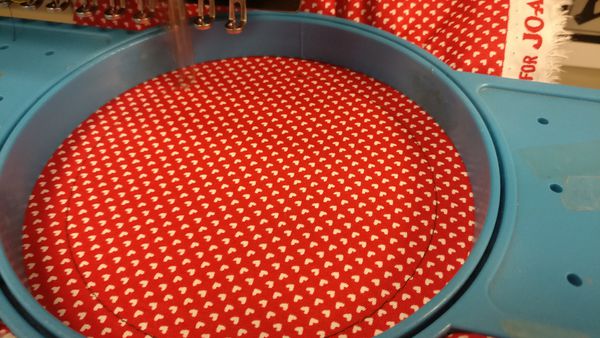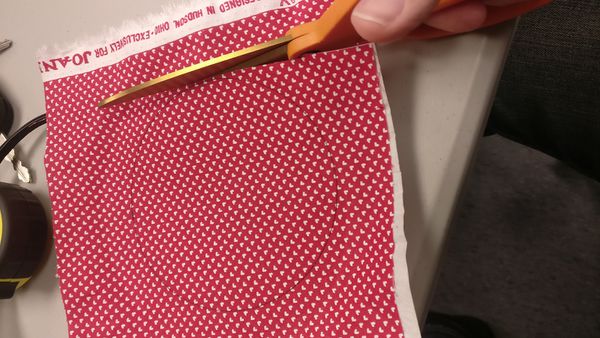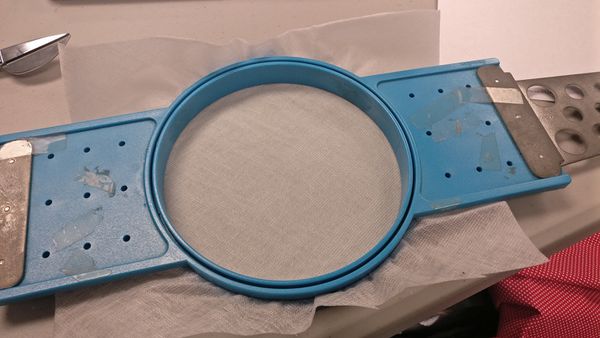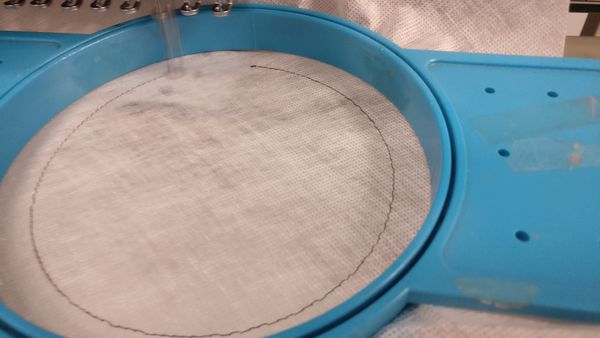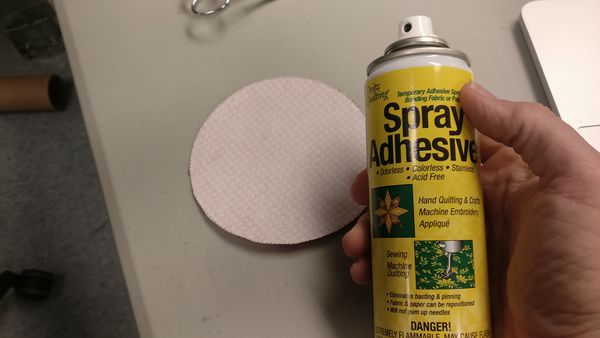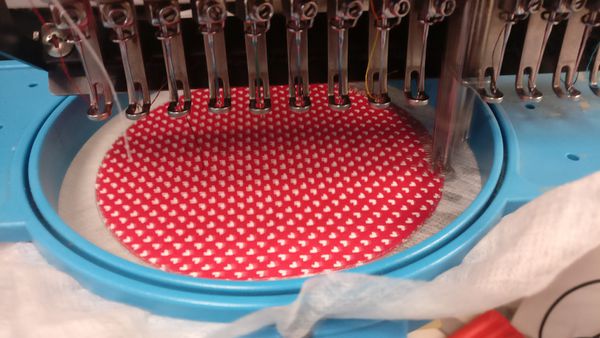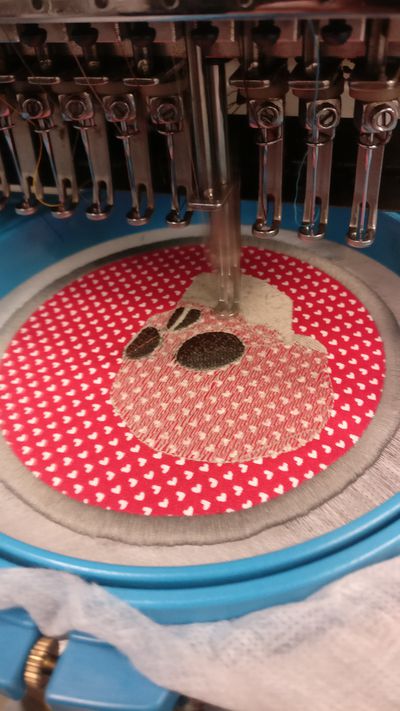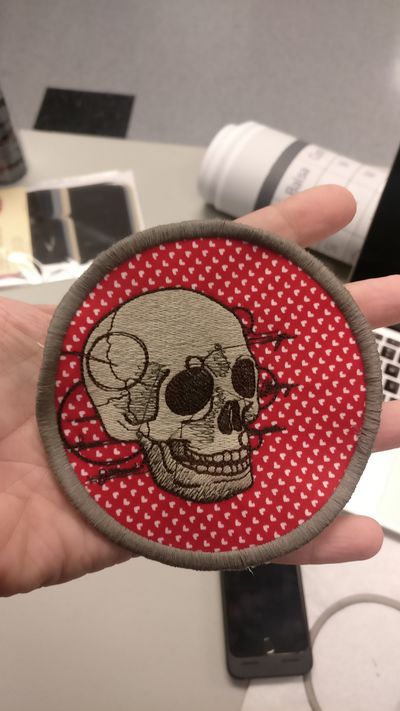Difference between revisions of "How to Make an Embroidered Patch on the Barudan Elite"
| Line 1: | Line 1: | ||
| − | Learning Resources | + | =Learning Resources= |
*Links: | *Links: | ||
**[http://www.erichcampbell.com/how-to-make-patches-embroidery-machine/ How to Make Patches with Your Embroidery Machine] - Erich Campbell | **[http://www.erichcampbell.com/how-to-make-patches-embroidery-machine/ How to Make Patches with Your Embroidery Machine] - Erich Campbell | ||
| Line 9: | Line 9: | ||
| − | Materials used for making Patches | + | =Materials used for making Patches= |
* Quilting cotton with patterned designs - its a bit thin, but looks great with designs, especially with bright colors | * Quilting cotton with patterned designs - its a bit thin, but looks great with designs, especially with bright colors | ||
* Twill - I've experimented with [http://www.joann.com/dritz-iron-on-patches-5inx5in-2-pkg/prd48909.html Twill iron-on patches] and now looking for a source of twill by the yard | * Twill - I've experimented with [http://www.joann.com/dritz-iron-on-patches-5inx5in-2-pkg/prd48909.html Twill iron-on patches] and now looking for a source of twill by the yard | ||
| Line 16: | Line 16: | ||
* Water Soluble Stabilizer (Need to note the Pellon # that I've been using) | * Water Soluble Stabilizer (Need to note the Pellon # that I've been using) | ||
| − | Prepping the Art | + | =Prepping the Art= |
There are a few different ways to approach patch making. You can take an existing embroidery design and a separate applique / patch border and use them together, OR you can design a custom patch file. You need a file that contains a "dieline" which is a single perimeter stitch for placement, a zig-zaf tack down stitch, the patch edge border, and the main design for the patch. | There are a few different ways to approach patch making. You can take an existing embroidery design and a separate applique / patch border and use them together, OR you can design a custom patch file. You need a file that contains a "dieline" which is a single perimeter stitch for placement, a zig-zaf tack down stitch, the patch edge border, and the main design for the patch. | ||
| − | + | =Making the Patch= | |
NOTE: This tutorial assumes you already know how to load thread, load a file, set the origin, etc. Strongly suggest trying a new design on a piece of stabilizer first to ensure that it works well before going through the full patch process. | NOTE: This tutorial assumes you already know how to load thread, load a file, set the origin, etc. Strongly suggest trying a new design on a piece of stabilizer first to ensure that it works well before going through the full patch process. | ||
| Line 74: | Line 74: | ||
| − | To Research | + | =To Research= |
*[https://allstitch.net/product/15-x-15-blank-patch-material-for-embroidery-black-4635.cfm Blank Patch Fabric in 15x15 pieces] | *[https://allstitch.net/product/15-x-15-blank-patch-material-for-embroidery-black-4635.cfm Blank Patch Fabric in 15x15 pieces] | ||
*[https://colmanandcompany.com/Patches.html PatchMat Material] | *[https://colmanandcompany.com/Patches.html PatchMat Material] | ||
| − | Related | + | =Related Projects= |
*[https://www.youtube.com/watch?v=xFBB1VZS8Ic Creating a Snap Key Fob] | *[https://www.youtube.com/watch?v=xFBB1VZS8Ic Creating a Snap Key Fob] | ||
Revision as of 09:27, 18 February 2018
Contents
Learning Resources
- Links:
- How to Make Patches with Your Embroidery Machine - Erich Campbell
- How to Make Patches - Cotton and Steel Fabrics
- Patch It Up - Urban Threads
- Videos:
- Embroidery Hub Ep. 28: DIY Patches | Bulk Patch Embroidery Tutorial - Good video of the process
Materials used for making Patches
- Quilting cotton with patterned designs - its a bit thin, but looks great with designs, especially with bright colors
- Twill - I've experimented with Twill iron-on patches and now looking for a source of twill by the yard
- Spray Adhesive - Dritz Quilting Adhesive Spray - DO NOT USE STANDARD ADHESIVES, they can gum up the needles
- Standard Stabilizer (I've been using the roll)
- Water Soluble Stabilizer (Need to note the Pellon # that I've been using)
Prepping the Art
There are a few different ways to approach patch making. You can take an existing embroidery design and a separate applique / patch border and use them together, OR you can design a custom patch file. You need a file that contains a "dieline" which is a single perimeter stitch for placement, a zig-zaf tack down stitch, the patch edge border, and the main design for the patch.
Making the Patch
NOTE: This tutorial assumes you already know how to load thread, load a file, set the origin, etc. Strongly suggest trying a new design on a piece of stabilizer first to ensure that it works well before going through the full patch process.
Steps:
- Art Prep
- Need the embroidery Design
- Need an outer circle stitch - I used embird to add a "basting stitch" in the editor.
- Gather Materials
- Make a fabric sandwich - front fabric, back fabric - can use the same fabric. Can fuse with adhesive or with a fusable interfacing material
- Hoop the fabric + standard backing
- Embroider the dieline on the fabric and backing
- Cut the fabric + backing very close to the dieline
- Hoop the water soluble stabilizer
- Embroider the dieline on the water soluble stabilizer
- Apply spray adhesive to back of the fabric + backing
- Place the fabric + backing onto the water soluble stabilizer using the dieline as a guide
- If you have a zigzag stitch line for attaching the patch (like in the Urban Threads patch borders) use it to attach the patch - otherwise, start embroidering the border. If your patch needs the border done last, strongly recommend using a zigzag attaching stitch.
- Embroider the border, then the center art
- Clean up any extra threads / jump stitches, etc.
- Unhoop the patch
- Trim the water soluble stabilizer close to the patch edge
- Rinse the patch to washaway the stabilizer
- Use a cloth to absorb excess water and let the patch dry
